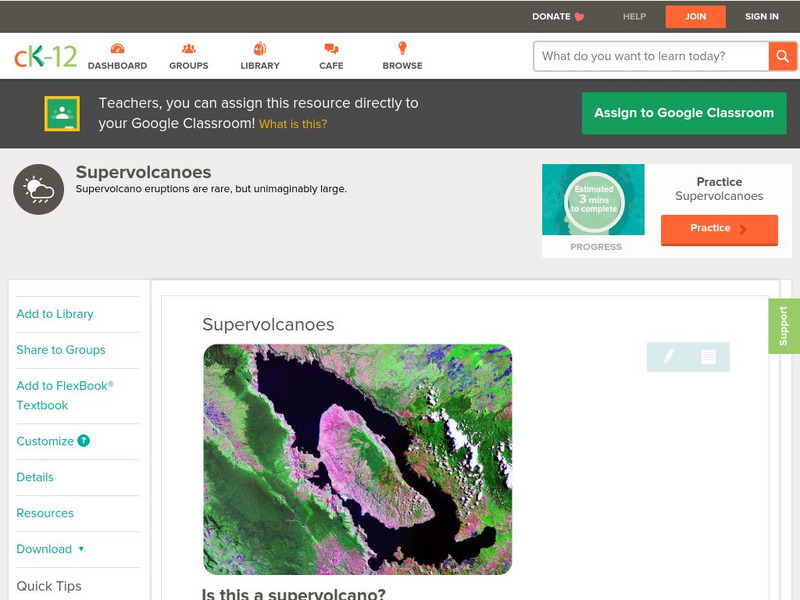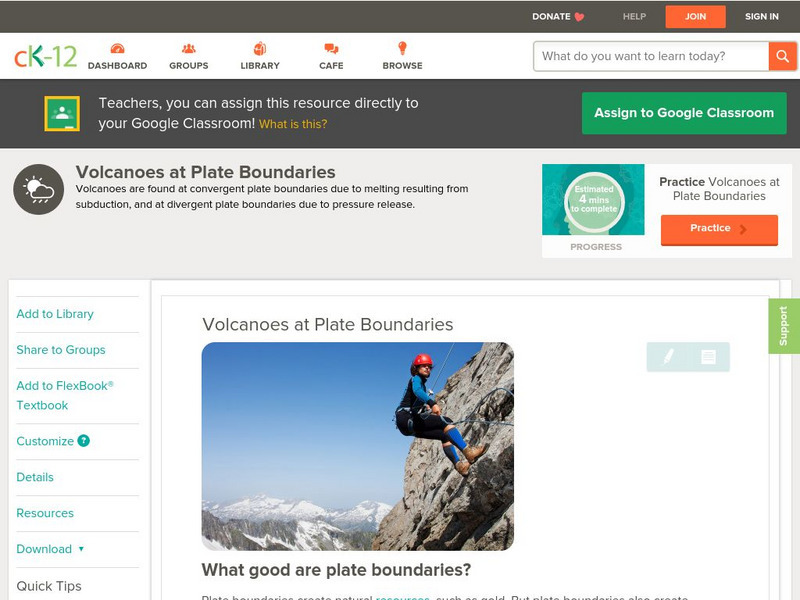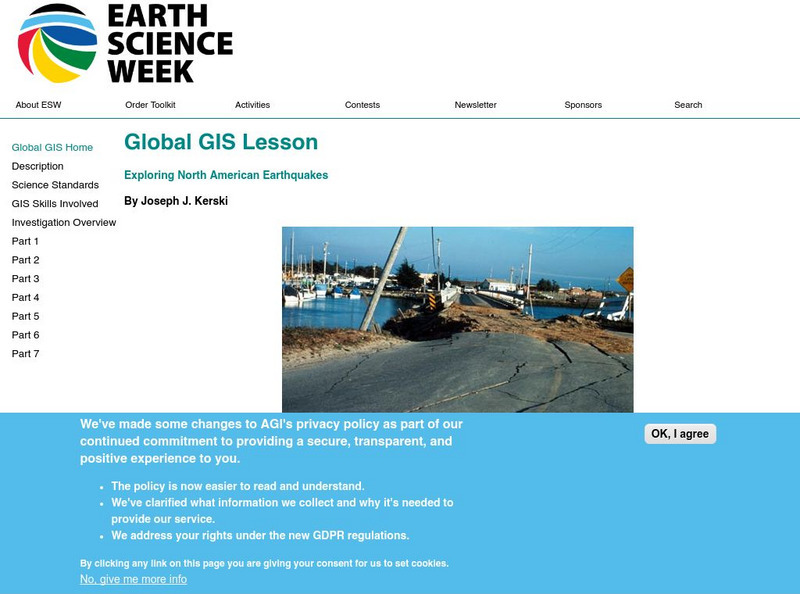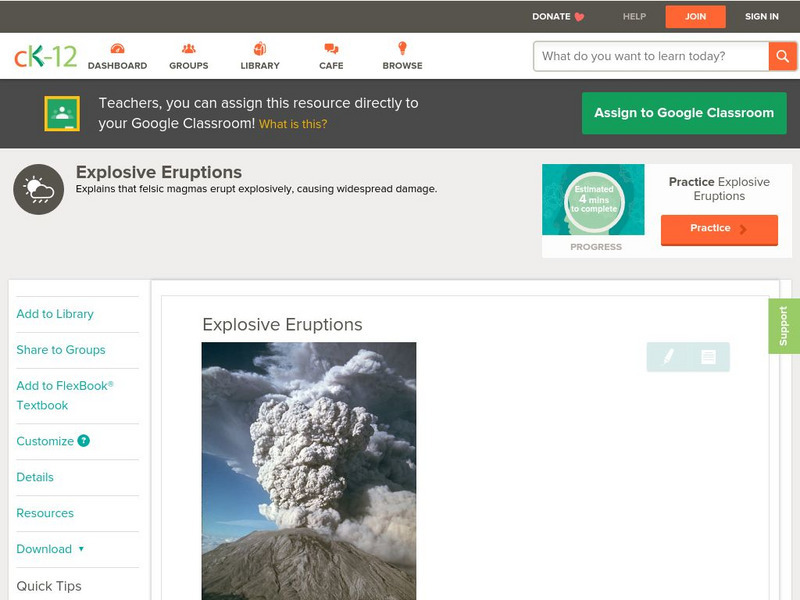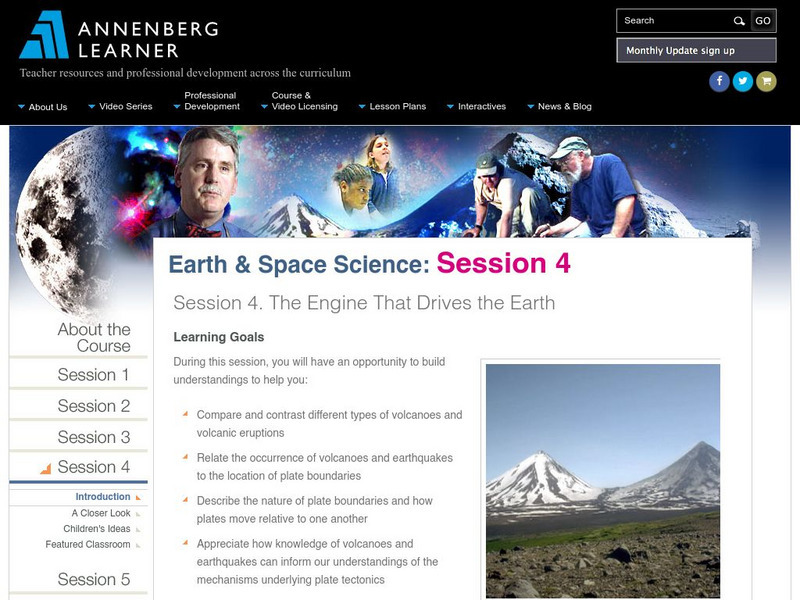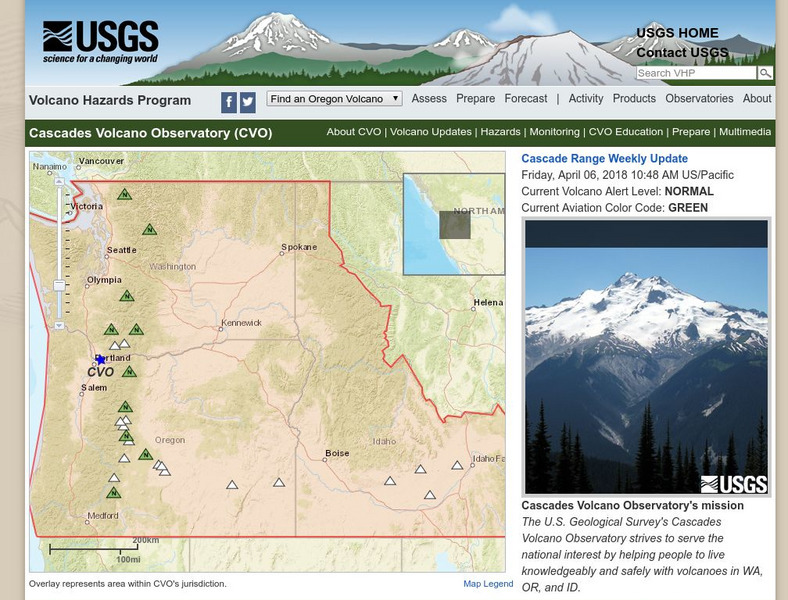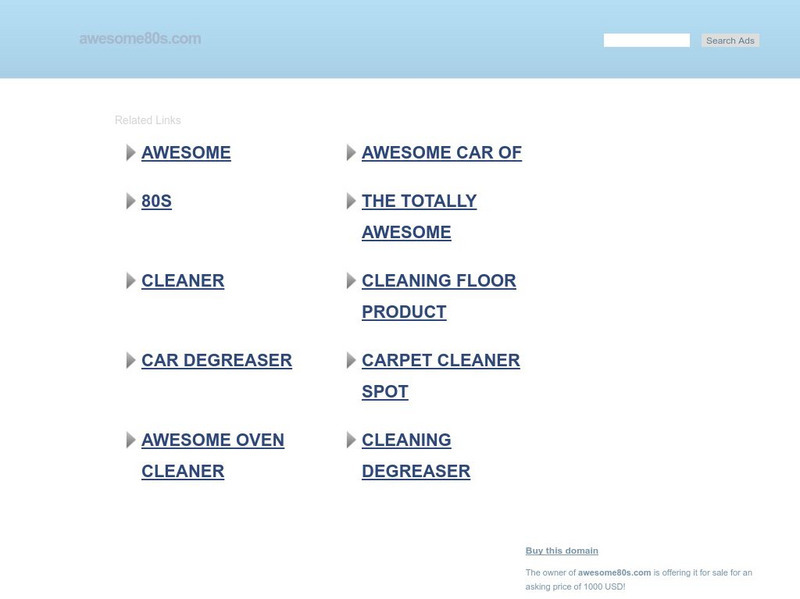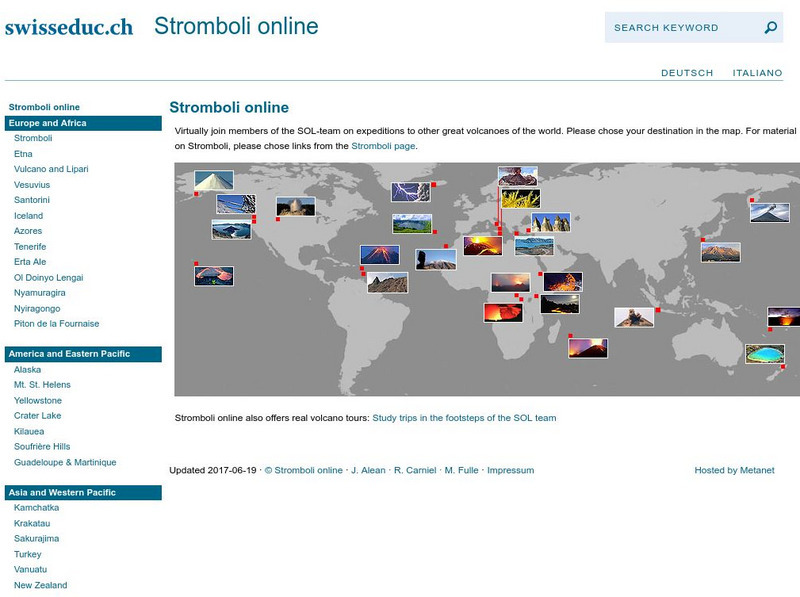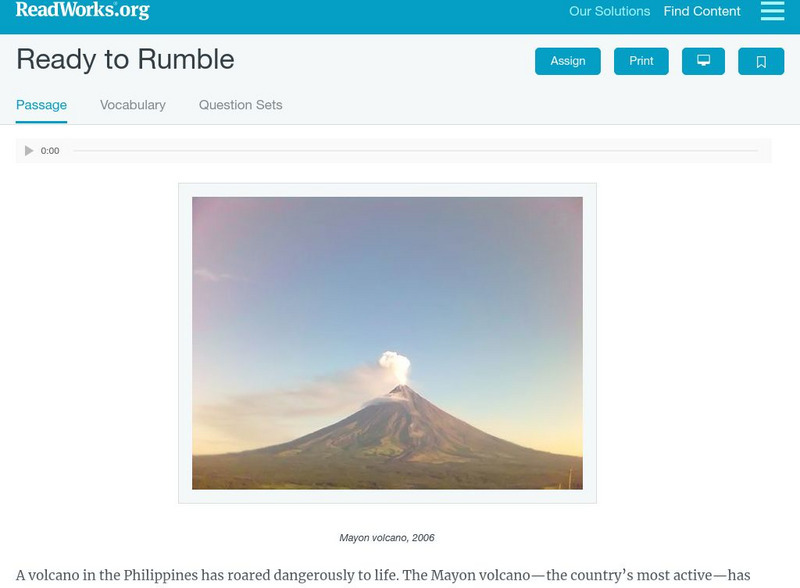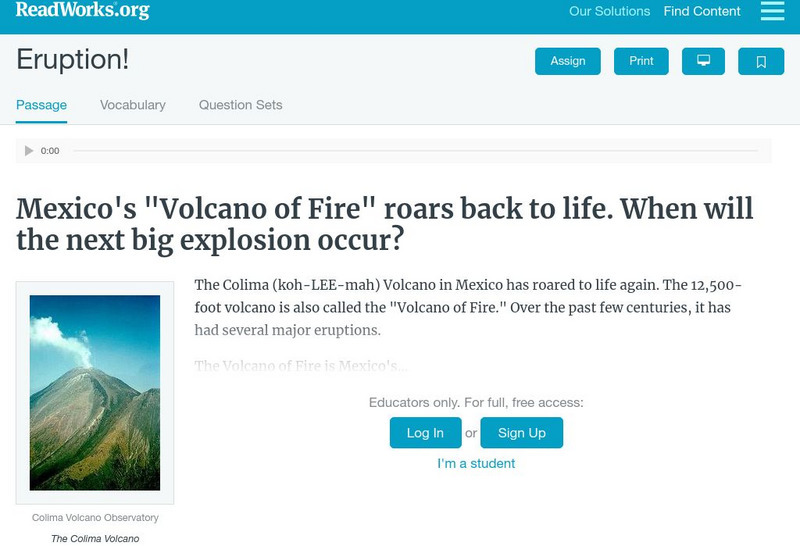CK-12 Foundation
Ck 12: Earth Science: Supervolcanoes
[Free Registration/Login may be required to access all resource tools.] Supervolcanoes are unimaginably large volcanoes.
CK-12 Foundation
Ck 12: Earth Science: Types of Volcanoes
[Free Registration/Login may be required to access all resource tools.] Different types of eruptions create different types of volcanoes.
CK-12 Foundation
Ck 12: Earth Science: Volcanic Landforms
[Free Registration/Login may be required to access all resource tools.] Lava and magma create many types of landforms.
CK-12 Foundation
Ck 12: Earth Science: Volcano Characteristics
[Free Registration/Login may be required to access all resource tools.] What volcanoes are and where they are located.
CK-12 Foundation
Ck 12: Earth Science: Volcano Characteristics
[Free Registration/Login may be required to access all resource tools.] What volcanoes are and where they are located.
CK-12 Foundation
Ck 12: Earth Science: Volcanoes at Plate Boundaries
[Free Registration/Login may be required to access all resource tools.] Volcanoes most often occur at plate boundaries.
American Geosciences Institute
American Geosciences Institute: Earth Science Week: Global Gis Lesson: Exploring North American Earthquakes
In this series of lessons, students use Geographic Information Systems (GIS) together with the tools and data from the North America Global GIS CD to investigate earthquakes, volcanoes, and population from a local to global scale....
CPALMS
Florida State University Cpalms: Florida Students: Mantle Convection and Earth's Features
A resource to help understand that the movement of the Earth's tectonic plates is caused by convection. The plates' movements cause geologic features on the Earth's surface.
University of Wisconsin
The Why Files: Volcanic Activity
A resource to help understand how volcanoes work and how the can affect their surroundings.
Natural History Museum
Natural History Museum: Volcanoes and Earthquakes
As an online exhibit from the Natural History Museum, this site provides three videos on natural processes of Earth. The videos cover tsunamis, earthquakes, and volcanoes.
US Environmental Protection Agency
Epa: Natural Disasters: Volcanoes
Read this EPA resource about what to do if you are in immediate danger from a volcanic eruption.
CK-12 Foundation
Ck 12: Earth Science: Effusive Eruptions
[Free Registration/Login may be required to access all resource tools.] Effusive eruptions are relatively mild eruptions that produce lava flows.
CK-12 Foundation
Ck 12: Earth Science: Effusive Eruptions
[Free Registration/Login may be required to access all resource tools.] Effusive eruptions are relatively mild eruptions that produce lava flows.
CK-12 Foundation
Ck 12: Earth Science: Explosive Eruptions
[Free Registration/Login may be required to access all resource tools.] Explosive eruptions cause widespread damage and are very dangerous.
CK-12 Foundation
Ck 12: Earth Science: Hot Springs and Geysers
[Free Registration/Login may be required to access all resource tools.] How water heated by magma may emerge as a hot spring or geyser.
American Museum of Natural History
American Museum of Natural History: Ring of Fire O Logy Card
Flip over this interactive OLogy flash card to read about the Ring of Fire, a series of volcanoes in the Pacific Ocean along the Pacific Plate.
Annenberg Foundation
Annenberg Learner: Earth and Space Science: The Engine That Drives the Earth
Material to begin an exploration of volcanoes, earthquakes, and plate tectonics. An hour-long video is accompanied by learning goals, an outline and overview, details on volcano types, plate boundaries, and "hot spots," and ideas for...
US Geological Survey
U.s. Geological Survey: Volcano Hazards Program: Cascades Volcanoes Observatory
Information about all the volcanoes in the Cascades, which range from Canada in the north to California in the south.
Other
Awesome80s.com: Mt. St. Helen's Eruption
Read about the eruption of Mt. St. Helen's. Includes first-hand descriptions by geologists. Also includes a table which lists other notable volcanic eruptions that have happened in the 20th century.
Swiss Educ
Swiss Educ.: Stromboli Online: Volcano Expeditions
Virtually join memebers of the SOL-team on expeditions to the great volcanoes of the world.
US Geological Survey
U.s. Geological Survey: Haleakala Crater and the East Maui Volcano
Information from USGS about the Haleakala Crater and the East Maui volcano, including the volcano's eruptive history, maps of the crater, and geologic data sets.
US Geological Survey
Hawaiian Volcano Observatory: Mauna Loa Earth's Largest Volcano
Mauna Loa means long mountain, and it is the largest and most active volcano on earth. Get some good overall facts regarding this infamous volcano.
Read Works
Read Works: Ready to Rumble
[Free Registration/Login Required] Students read about three different types of volcanoes. A question sheet is available to help students build skills in classifying and categorizing.
Read Works
Read Works: Eruption!
[Free Registration/Login Required] An informational text that asks the reader to make predictions about the eruption of the Colima Volcano in Mexico. A question sheet is available to help students build skills in reading comprehension.


